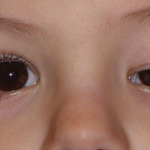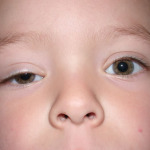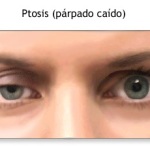A drooping eyelid is known as ptosis or blepharoptosis in medical terms. Sagging of upper eyelid is described as ptosis. If the drooping of eyelid is severe it can affect your vision. The upper eyelid slowly falls down to lower position thereby interfering with vision. This situation can happen in one eye or both the eyes. For some people ptosis is inherited by birth. Ptosis or drooping of eyelid is a gradual process. It can be the symptom of underlying medical problems in the nerves or brain also. In rare cases ptosis can develop within few days which can be warning signal of serious problem.
Ptosis Causes :
Number of factors can affect the normal position of eyelid. It can happen due to problems in the nerves, muscles or skin of the eyes.
- Congenital :
Prosis problem can be inherited by birth which can be due to developmental problem inside the uterus. In most of the congenital cases only one eyelid is affected. Ptosis repair has to be done quickly to prevent further damage to the vision of the child.
- Senile Ptosis :
Aging is the main cause for aponeurotic or senile ptosis. As one grows old, effects of gravitational force can weaken the tissue that binds the levator muscle of the eyelid. Both eyes are equally affected in this case and ptosis repair is done to regain normal vision.
- Myasthenia Gravis :
It is a rare disorder affecting the way in which the muscle responds to the nerves. Ptosis or drooping of eyelid is the first symptom of this disease which can progress gradually affecting other parts of the body.
- Muscular Disorder :
Some people inherit certain muscle diseases like oculopharyngeal muscular dystrophy. This can seriously interfere with the normal eye movement and can also cause difficulty in swallowing. Ptosis can also be caused due to external opthalmoplegia affecting both the eyes.
- Nerve Problems :
Any problem in the brain or nervous system can affect the vision, since the eye muscles are controlled by brain. Any injury on the cranial nerves can cause ptosis repair. For example, brain tumor, brain aneurysm and stroke are serious medical conditions affecting the vision. Long term diabetes can also affect the eye muscles.
- Eye Infection and Diseases :
Eyelid drooping can occur due to any infection on the eye or tumor growth on the eyelid.
Symptoms Of Ptosis :
You may not be able to open your eyes fully because of drooping eyelid. The affected eye would appear smaller than the other one. The disease would also make loss of the folds of skin that lies between the eyebrow and the upper eyelid. The affected person may raise his eyebrows to open his eyes, without his knowledge. This can eventually cause headache. Drooping of eyelids is the major symptom of ptosis.
This is the only symptom of ptosis without any complication. Some people may have problems in their vision. In case ptosis develops due to other medical conditions in the body it can cause other signs. The person may develop double vision if he/she has developed myasthenia gravis. Children born with ptosis will make use of certain body languages like tilting of head or raising eyebrows frequently if they have drooping of eyelids. Many children may develop vision problems at early ages if they have inherited ptosis.
Read more on Eyelid Twitching
Tests :
Age related ptosis is quite common and the drooping of eyelids progresses over age. Doctor can simply identify the problem during eye examination. He would also check if ptosis has developed due to other medical conditions. He may look into other symptoms like weakness, headache, numbness or tingling sensation in any part of the body. To get clear picture of the underlying nervous problem he may order for CT or MRI scan. If the doctor suspects myasthenia gravis he may request for blood culture or tensilon test. Children born to parents with ptosis should be taken for regular eye-checkups to prevent further loss of vision.
Images, Pics, Photos and Pictures of Ptosis :
Treatment :
Surgery is the ideal option for adult patients with ptosis. The surgeon would gently life the upper eyelid that blocks the vision. This procedure can be carried as outpatient basis after giving the person local anesthesia. For children born with inherited problem corrective surgery is to be done for ptosis repair. This would reduce the chance of losing vision. Mild form of ptosis can be corrected through eyelid surgery on outpatient basis under general anesthesia.
For cases of ptosis with underlying medical issues, your doctor would treat the disorder first to see any improvement in vision. Most of the cases of ptosis with major brain injury or nerve damage would resolve automatically if the condition is treated and corrected. Medications like pyridostigmine or neostigmine are prescribed for people who have developed ptosis due to myasthenia gravis. Prednisone can also be given to reduce the symptoms. Babies born with inherited ptosis may develop amblyopia or lazy eye problem. In such cases early treatment and corrective surgery is the solution to get normal vision.
Prognosis :
Often the symptoms would improve after ptosis repair. In few cases even after surgery the eyelids may not look equal. Some children would keep the eyes slightly opened during sleep since the eyelids will not close fully after surgery.



